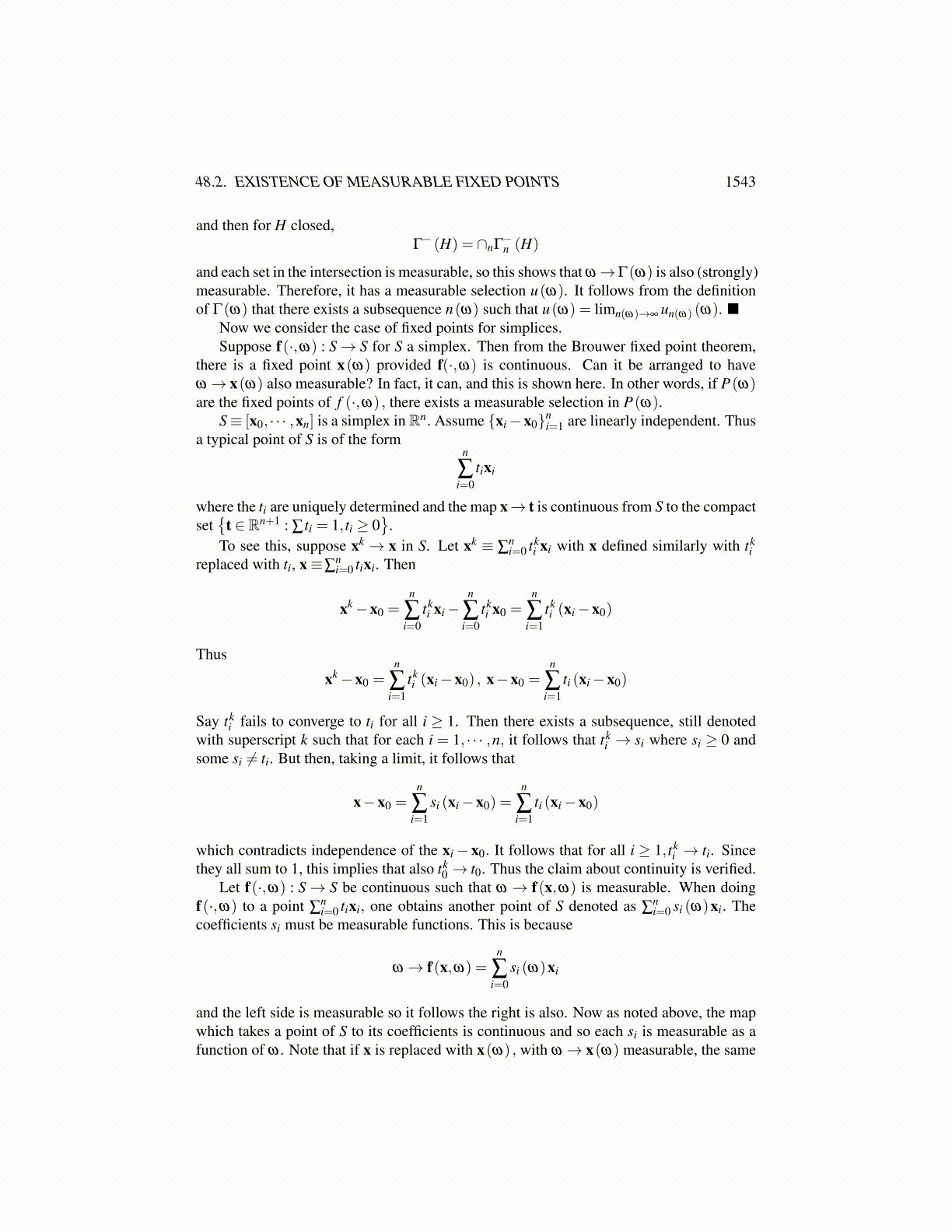
48.2. EXISTENCE OF MEASURABLE FIXED POINTS 1543
simplices from the triangulation contained in Ŝ which have two faces with value P̂k (A k+1simplex has either 1 or 2 P̂k faces.) and let R be the number of k+ 1 simplices from thetriangulation contained in Ŝ which have exactly one P̂k face. These are the ones we wantbecause they have value P̂k+1. Thus the number of faces having value P̂k which is describedhere is 2Q+R. All interior P̂k faces being counted twice by this number. Now we count thetotal number of P̂k faces another way. There are P of them on the face
[x j1 , . . . ,x jk+1 , x̂ jk+2
]and by induction, P is odd. Then there are O of them which are not on this face. Thesefaces got counted twice. Therefore,
2Q+R = P+2O
and so, since P is odd, so is R. Thus there is an odd number of P̂k+1 simplices in Ŝ.We refer to this procedure of labeling as Sperner’s lemma. The system of labeling is
well defined thanks to the assumption that {xk−x0}nk=1 is independent which implies that
{xk−xi}k ̸=i is also linearly independent. Sperner’s lemma is now a consequence of thisdiscussion.
48.2.3 Measurability Of Brouwer Fixed PointsFirst, here is a nice measurable selection theorem.
Lemma 48.2.2 Let U be a separable reflexive Banach space. Suppose there is a sequence{u j (ω)
}∞
j=1 in U, where each ω → u j (ω) is measurable and for each ω, supi ∥ui (ω)∥<∞. Then, there exists u(ω) ∈U such that ω → u(ω) is measurable, and a subsequencen(ω), that depends on ω , such that the weak limit
limn(ω)→∞
un(ω) (ω) = u(ω)
holds.
Proof: Let {zi}∞
i=1 be a countable dense subset of U ′. Let h : U →∏∞i=1R be defined
by
h(u) =∞
∏i=1⟨zi,u⟩ .
Let X = ∏∞i=1R with the product topology. Then, this is a Polish space with the metric
defined as d (x,y) = ∑∞i=1
|xi−yi|1+|xi−yi|2
−i. By compactness, for a fixed ω,the h(un (ω)) arecontained in a compact subset of X . Next, define
Γn (ω) = ∪k≥nh(uk (ω)),
which is a nonempty compact subset of X . Moreover, Γn (ω) is a measurable multifunctioninto X .
Next, we claim that ω → Γn (ω) is a measurable multifunction.The proof of the claim is as follows. It is necessary to show that Γ−n (O) defined as
{ω : Γn (ω)∩O ̸= /0} is measurable whenever O is open. It suffices to verify this for O a